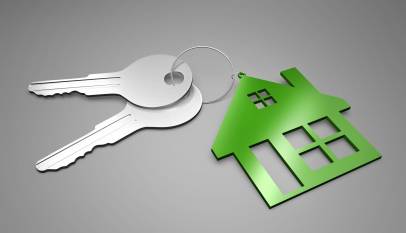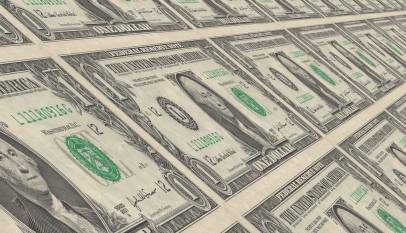
A personal loan is a loan taken out for a short period of time, usually between two and five years. The length of time is fixed and does not fluctuate, unlike a credit card or line of credit. Most personal loan amounts are between $1,000 and $100,000, depending on your need and creditworthiness. Each bank has its own set of limitations on how much and how long you can borrow for a personal loan.
how do i get a quick loan
Personal loans are typically unsecured, which means there is no collateral, such as a car or house backing the loan. Different types of lenders offer personal loans, including traditional brick-and-mortar banks and online-only lenders. They serve borrowers with varying credit scores, income and other qualifying requirements.
This guide explains how you can evaluate online lenders for personal loans. It offers guidance for finding the right lender for your credit history and income, interest rates offered, how much you can borrow, what you can and can’t use the loan for, and if you can have a co-signer. Choosing the right lender and terms can save you thousands of dollars.
What Are the Best Personal Loan Companies of 2019?
- LendingClub: Best Lender for Fair Credit
- SoFi: Best Lender for Loans of up to $100,000
- Discover: Best Lender for Long Loan Terms
- LightStream: Best Lender for Loans with a Co-Signer Option
- Marcus by Goldman Sachs: Best Lender with No Loan Fees
- Prosper: Best Lender for up to a 50% Debt-To-Income Ratio
- Upstart: Best Lender with a Low Minimum Loan Amount
U.S. News evaluated personal loan companies based on nationwide availability and customer satisfaction ratings from the Better Business Bureau and J.D. Power 2019 U.S. Personal Loan Satisfaction Study.
Each consumer has different needs, and many lenders specialize in specific areas designed to meet them. Because no lender is perfect for every consumer, recommendations are based on eligibility requirements, interest rates and features that make them good matches for different types of consumers.
Best Lender for Fair Credit
LendingClub
- Minimum FICO score: 600
- Maximum debt-to-income ratio: 40%
- Co-signer option: Yes
- Preapproval or rate quotes available: Yes
- Loan amounts: $1,000 to $40,000
- Loan terms: Three to five years
- Loan use restrictions: None
- Discounts: None
- Origination fee: 1% to 6%
Best Lender for Loans of up to $100,000
SoFi
- Minimum FICO score: 680
- Maximum debt-to-income ratio: N/A
- Co-signer option: Accepts co-borrowers
- Preapproval or rate quotes available: Yes
- Loan amounts: $5,000 to $100,000
- Loan terms: Two to seven years
- Loan use restrictions: Personal use only
- Discounts: Autopay, additional SoFi loan
- Origination fee: None
Best Lender for Long Loan Terms
Discover
- Minimum FICO score: 660
- Maximum debt-to-income ratio: N/A
- Co-signer option: No
- Preapproval or rate quotes available: Rate check available
- Loan amounts: $2,500 to $35,000
- Loan terms: Three to seven years
- Loan use restrictions: Only debt consolidation, home repairs/improvements or major purchases.
- Discounts: None
- Origination fee: None
Best Lender for Loans with a Co-Signer Option
LightStream
- Minimum FICO score: 660
- Maximum debt-to-income ratio: N/A
- Co-signer option: Yes
- Preapproval or rate quotes available: No
- Loan amounts: $5,000 to $100,000
- Loan terms: Two to seven years
- Loan use restrictions: Funds must be used for approved loan purpose
- Discounts: None
- Origination fee: None
Best Lender with No Loan Fees
Marcus by Goldman Sachs
- Minimum FICO score: Not disclosed
- Maximum debt-to-income ratio: Not disclosed
- Co-signer option: No
- Preapproval or rate quotes available: Not disclosed
- Loan amounts: $3,500 to $40,000
- Loan terms: Three to six years
- Loan use restrictions: Only debt consolidation, home improvement, major purchases, special occasions, moving and relocation and vacations
- Discounts: After making 12 or more consecutive monthly payments in full and on time, you can defer a payment interest free for a month.
- Origination fee: None
Best Lender for up to a 50% Debt-To-Income Ratio
Prosper
- Minimum FICO score: 640
- Maximum debt-to-income ratio: 50%
- Co-signer option: No
- Preapproval or rate quotes available: Yes
- Loan amounts: $2,000 to $40,000
- Loan terms: Three to five years
- Loan use restrictions: No student loan debt
- Discounts: None
- Origination fee: 2.41% to 5%
Best Lender with a Low Minimum Loan Amount
Upstart
- Minimum FICO score: 620
- Maximum debt-to-income ratio: Not disclosed
- Co-signer option: No
- Preapproval or rate quotes available: Yes
- Loan amounts: $1,000 to $50,000
- Loan terms: Three to five years
- Loan use restrictions: Must adhere to Upstart’s acceptable use policy
- Discounts: None
- Origination fee: 0% to 8%
What Are Good Reasons to Get a Personal Loan?
Personal loans are not a solution for most financial situations, says Eric Roberge, certified financial planner and owner of financial planning website Beyond Your Hammock. “Most times, they are just a Band-Aid on improper money management,” he says.
how do i get a quick loan
A situation where Roberge recommends a personal loan is if you have credit card debt with high interest rates. Paying off debt with a high interest rate, such as a 24% annual percentage rate, can be difficult because the more interest you owe, the higher your payments will be and the longer it could take you to be debt-free. But if you qualify for a personal loan with a much lower interest rate, you can pay off the debt faster and spend less on interest.
“One bad reason to take out a personal loan is to invest in the stock market,” he says. “There is no reason to go into debt just to get money in the market. Save and then invest.”
how do i get a quick loan
Some of the worst uses for personal loans are vacations, weddings, engagement rings and other unnecessary expenses. If you’re having trouble saving for an expense like a wedding or vacation, delaying it until you can pay for it in cash is a better option than a personal loan.
Personal loans are also not a good idea for home repairs. It’s usually better to use a home equity loan that taps the equity built up in your home, since home equity loans usually have lower interest rates.
Personals Loans vs. Payday Loans
While personal loans are offered by trustworthy lenders, payday loans are predatory, often signing up borrowers for debt that takes several cycles to pay off. A payday loan is a short-term loan, usually limited to a few hundred dollars. The borrower agrees to pay the lender the amount of the loan plus interest, and writes a check or gives access to their bank account. The lender then deposits the check when the loan comes due, which is typically the borrower’s next payday. However, if the borrower does not have enough money in the bank at that time, the lender will usually extend the loan until the next payday.
Most payday loans have exorbitant interest rates, often around 400% APR and sometimes up to 700%. Many borrowers end up extending their loans several times over. Because the interest rate is so high, they struggle to repay the loan.
“Subprime lenders that don’t care about a customer’s ability to repay are probably counting on them not being able to pay the loan back on time,” says Jared Kaplan, CEO of OppLoans, an online lender that focuses on customers with fair to poor credit.
how do i get a quick loan
He says this sounds counterintuitive, as lenders might be out of business if customers can’t repay loans. But lenders commonly extend the loan’s repayment term in exchange for charging additional fees or interest. This practice is known as rollover or sometimes reborrowing if a person is paying one loan off and then immediately taking out a new one to meet other expenses. Payday loans that continue to roll over with additional fees or interest are how consumers get trapped in a nasty cycle of debt, says Kaplan.
A payday loan is never a good idea, especially if you’re having trouble making ends meet. They can lead to bigger financial problems and can often cost you far more than you originally borrowed. If you find yourself contemplating a payday loan, consider borrowing money from family or friends, or sell something you own.
U.S. News Survey: Cost Drives Personal Loan Decisions, and Borrowers Don’t Research Loans Much
U.S. News conducted a survey of consumers with personal loans to find out how borrowers are applying for and using personal loans. Often, borrowers aren’t sufficiently researching loans before they apply and may not be prepared to get the best rates and loan products. Most respondents considered cost as the deciding factor for their loan, but many did not compare rates from multiple lenders before choosing a loan company. Many borrowers didn’t check their credit score or report before applying and most did not consider alternatives to personal loans.
Many borrowers are using personal loans for debt consolidation or home improvement.
Debt consolidation and home improvement are the two most common uses for personal loans. Other common personal loan purposes include unexpected expenses and large purchases.

(Conducted using Google Surveys – July/August 2018)
More than half of borrowers who used their personal loan for debt consolidation said the loan helped them reduce overall debt.

(Conducted using Google Surveys – July/August 2018)
Many borrowers aren’t adequately researching personal loans before applying.
Although 27% of borrowers spent four or more hours researching personal loans, 34% did minimal research, spending two hours or less. More than 20% of respondents didn’t spend any time researching loans before submitting an application.

(Conducted using Google Surveys – July/August 2018)
More than half (52%) of respondents didn’t use preapprovals to compare rates and fees from multiple lenders. Just 21% compared rates from at least three lenders. Obtaining preapprovals from multiple lenders can make it easy to identify the personal loan companies that are likely to approve your application at the best rate.

(Conducted using Google Surveys – July/August 2018)
Cost is the deciding factor for most personal loan borrowers.
A lower APR or lower fees were the deciding factors for 36% of respondents when they chose a lender. Convenience or ease of application were the most important factors for 20% of respondents.

(Conducted using Google Surveys – July/August 2018)
Many borrowers aren’t checking their credit or considering alternatives to personal loans.
More than 48% of respondents said they didn’t check their credit report or score before applying, while almost 5% said they didn’t know how to check. Reviewing your credit report and taking action to improve your credit score can help you qualify for the best rates on loans.

(Conducted using Google Surveys – July/August 2018)
The majority of respondents (57%) didn’t consider common alternatives to personal loans including credit cards, savings, home equity loans and mortgage refinancing. It’s a good idea to research loan alternatives, as some may offer better rates or terms. For example, 21% of respondents used their personal loan for home improvement, but only 13% considered a home equity loan. Home equity loans may offer a lower interest rate than personal loans.
how do i get a quick loan

(Conducted using Google Surveys – July/August 2018)
Survey methodology:
- U.S. News ran a nationwide survey through Google Surveys between July 13 and August 11, 2018.
- The sample size was the general American population and the survey was configured to be representative of this sample.
- The survey asked 10 questions relating to obtaining and using a personal loan.
- All winning answers were statistically significant at the 95% confidence level.
What Are the Risks of Personal Loans?
How Personal Loans Affect Your Credit
When you apply for a loan, the lender will check your credit. There are two ways the lender can check it: a soft inquiry and a hard inquiry. A soft inquiry will only be visible to you and won’t count negatively against your credit score. But a hard inquiry will show up on your report and will be visible to any creditor who views the report. It will typically stay on the report for two years and may negatively affect your score for one year.
how do i get a quick loan
New hard inquiries specifically affect the new credit portion that makes up 10% of your FICO credit score, which is the score most commonly used by lenders when evaluating applicants. New credit refers to how many new credit inquiries you have and how many new lines of credit you opened recently.
Any time you open a new loan, you alter the average age of your credit. The length of your credit history counts for 15% of your FICO credit score, and the average age of your accounts is a factor in the length of your credit history. If you don’t have many loans or other types of credit, then a new account can significantly affect the average age of all your credit accounts.
Risk of Defaulting
If you stop making payments on a personal loan, you risk defaulting on the loan and damaging your credit.
“If you’re taking out an unsecured personal loan, you don’t have to risk losing your home or your car, but that doesn’t mean they’re risk-free,” says Kaplan. “Failing to pay the loan back, also known as defaulting, could do some pretty serious damage to your FICO score. That will make it harder and more expensive to borrow money in the future.”
how do i get a quick loan
Defaulting can lead to having the loan go to collections and getting a judgment issued against the borrower, both of which can stay on a credit report for years.
How Can You Get a Personal Loan?
Some of the most common requirements for a personal loan are:
- Minimum credit score: Most lenders require that you have at least fair or good credit when applying for a personal loan. Each lender sets its own cutoff for what it considers to be excellent, good, fair or bad credit. In general, fair credit is a FICO score between 580 to 669 and good credit is a score between 670 to 739. Most companies require a score of at least 600, but some have greater requirements A higher score will increase your ability to be approved, and the higher your score, the lower interest rate you’ll qualify for too.
- Clean credit history: Lenders don’t like to see defaults, collections or bankruptcies. If you have one or more of these on your credit report, you might not be approved for a personal loan. If you’re approved, you may have to pay an exorbitant interest rate.
- Stable employment: A lender needs to know that if it lends you money, you’ll have the means to repay it over time. Without a stable job, you could miss payments or default on the loan. Proof of employment validates your loan application.
- Proof of identification: Lenders usually need to see proof of identification, such as a copy of your driver’s license or passport, before approving your loan. Identity theft is common and they want to prevent thieves from taking out loans under another person’s credit.
How Your Credit Score Affects Interest Rates
Personal loan APRs typically range from about 6% to 36%, depending on creditworthiness and other factors. Jeff Rose, certified financial planner and CEO of financial planning firm Alliance Wealth Management, says consumers can get a better interest rate the higher their credit score.
In addition, the higher your credit score, the greater selection you’ll have in choosing a personal loan with favorable terms. Companies want to work with people who have good or excellent credit scores and are more likely to offer these consumers better terms.
how do i get a quick loan
Joseph A. Carbone, Jr., certified financial planner and founder of financial planning firm Focus Planning Group, says, “Realistically, you probably need a credit score of 680 to 700 or higher [to qualify for a personal loan]. If you are in a range of 620 to 680, you might need a co-signer to secure the line.”
Your credit score is not the only component that determines your approval and your interest rate for a personal loan.
Rose explains, “A lot of factors go into the approval process: the purpose of the loan, loan amount, repayment term, credit history and current financial situation.”
Companies will request information about your job, how much you earn, how stable your income is, what kind of savings you have and more. These are all important answers that can determine your eligibility.
Understanding the Application Process
When you first apply for a loan, if you meet the lender’s criteria, you’ll get a preapproved interest rate, which is a rate you receive that’s valid for a certain amount of time, usually up to 90 days. The preapproval rate may change once the final application goes through. Rates are not guaranteed and it’s up to borrowers to ask the lender how long the rate is guaranteed and if it might change before the application is finalized.
When you formally apply for the loan, you’ll choose what kind of term you want, which includes the length of the loan. You’ll also learn what interest rate you’ll have and if you have to pay any other fees, such as origination fees.
Most personal loans range from two to five years. Typically, the longer the term, the higher the interest rate. The formal application will lead to a hard inquiry on your credit report, where it will stay for two years, but only factor into your credit score for one year.
Once you finalize the loan, you’ll start repaying it according to the terms of the loan agreement. Remember, personal loans are not like credit cards. There’s a finite end date when you have to repay the entire sum plus interest.
How Can You Apply for a Personal Loan?
Determine How Much You Can Afford to Pay
Examine your budget to determine how much you can afford to pay each month. Getting an idea of this number before you look at a loan will help you choose the best lender for you. It doesn’t matter if you get an offer of 4% APR if the monthly payment isn’t something you can afford each month. This could lead to you defaulting on the loan, which will damage your credit.
how do i get a quick loan
“A loan with a longer repayment term might cost a little more overall, but that longer term will also lower the monthly payment amount,” Kaplan points out. “And if those payments are a much better fit for a person’s budget, then that loan is probably the best one for them.”
Get Preapproved Rates
Compare lenders to see what your preapproved interest rates are. Make sure that the lenders you’re requesting information from will only perform a soft inquiry on your credit.
When you request a rate quote, you’ll enter in your personal information, such as your address, income and Social Security number. You’ll indicate how much you want to borrow and the reason for borrowing. Once submitted, you’ll be informed of rates and how to formally apply for the loan. However, even if you’re a good applicant, you’re not guaranteed to be approved or get the interest rate you were hoping for.
If you have received preapproved offers in the mail or electronically, keep those in mind, but you should do further research. Choose your top one or two lenders and then apply formally.
How Can You Choose a Personal Loan Company?
Each lender has its own terms and conditions, so it’s important to figure out what you’re looking for before you start comparing lenders.
Approval Requirements
Typically, lenders have a minimum credit score that a borrower needs to have to qualify for a personal loan and may require a certain number of years’ worth of credit history to qualify. They also care about your debt-to-income ratio, which is how your monthly debt repayments compare to your monthly income. Lenders like to see a low debt-to-income ratio.
Lenders may not be licensed to lend money in every state. Before comparing lenders, check to make sure they can offer a loan where you live.
Some lenders allow you to take out a personal loan with a co-signer. A co-signer is helpful for those who don’t have enough income or credit history to qualify for a loan on their own. With a co-signer, you can sometimes get a lower interest rate since the lender is taking into account the co-signer’s credit score and history as well, and there’s someone else the lender can collect from if you stop making payments. The loan will also appear on the co-signer’s credit history, which could affect his or her ability to be approved for future credit. Keep this in mind if you ask someone to co-sign for you.
Lenders may offer merit-based qualifications, which means they will count your education, earning potential and more when approving you for a loan. This is especially helpful to low-income borrowers in the beginning of their careers.
Each lender may have a minimum income requirement that a borrower must meet to qualify for a personal loan. Borrowers with higher incomes tend to be better applicants because they have more money to pay back their loans with. However, a high income can’t fix a low credit score or high debt-to-income ratio.
Some lenders require that you work a certain number of years before you’re eligible for a personal loan. If you don’t have a long employment record or high income, you should make sure your credit score is strong.
Interest Rates
Most personal loans offer a fixed interest rate, which stays the same through the duration of the loan. variable rate changes over the life of the loan, depending on the market’s fluctuations. Variable rates could start out lower than fixed rates but come with the caveat that you might end up paying a higher interest rate if rates change while you’re repaying the loan. Some borrowers don’t want the uncertainty of a variable-rate loan and prefer to stick with a fixed-rate loan.
Loan Terms
Each lender has its own specific terms on how much it will lend, how long the borrower has to pay the money back and restrictions on what they can use the funds for.
Every lender has a minimum and maximum loan amount. For example, SoFi will lend up to $100,000 while Payoff lends up to $35,000. If you need to borrow $45,000, then only look at lenders who offer that amount or more. Don’t expect a personal exception if you need to borrow more than its maximum.
Lenders also have a minimum and maximum loan period, which is how long your repayment term is. Lenders typically have a loan period of two to five years, but some offer loans for up to seven years. The longer your loan period is, the lower your payments will be, but you will pay more in interest. If you can afford a higher monthly payment, go with the shorter loan period to save some money on interest.
Some lenders have restrictions on what your loan can be used for. Payoff only allows you to apply its personal loan funds toward your credit card debt, while Earnest does not allow borrowers to use funds for business expenses. Don’t lie about what you’re going to use the money for. Lying on your loan application can be deemed loan fraud and can result in extra fees and charges.
Lenders also have their own time frame for how quickly you’ll receive the funds from a personal loan. Usually, funds are distributed within a few business days. Sometimes, you can initiate a transfer the same day. Most lenders will disburse the funds electronically. A few lenders offer discounts if you set up automatic payments online. This can help you avoid missing a payment and save a little on interest at the same time.
Fees and Penalties
One of the most important aspects to compare before choosing a personal loan is the fees the lender charges. Fees can significantly increase the cost of a personal loan. For example, a 3% origination fee on a $25,000 loan is $750.
An origination fee is the fee a lender charges to administer the loan. Only a few lenders, including LightStream, SoFi and Earnest, do not charge an origination fee. Most lenders have an origination fee between 1%and 6%. The amount you pay for your origination fee may depend on your credit score, so the higher your score, the lower the origination fee.
While some lenders charge a prepayment fee, none of the lenders in this guide do. A prepayment fee is a fee you pay for repaying your loan early or ahead of schedule.
Late fees are still enforced with most lenders and paying your loan late can damage your credit score, so always pay your bill on time. Autopay can help you avoid late fees and forgetting to make your payment.
Most lenders charge a minimal fee for returned payments, which happens when the lender tries to take money out of your designated account and the funds are insufficient to cover the payment.
Repayment Options
Most lenders offer a few different repayment options including autopay, check by mail or online. These vary based on the lender, so if you find a lender you like, make sure it offers the repayment option that works best for you. Some lenders allow you to change the payment due date.
| SOFI | |
| US | |
Summary
The best loan compnies of the USA | % |



























